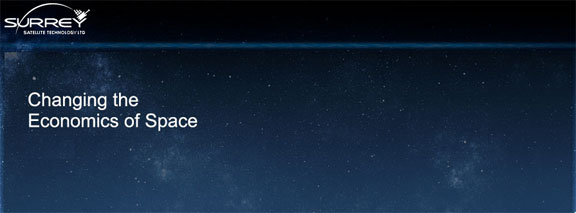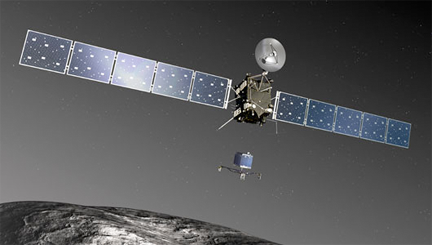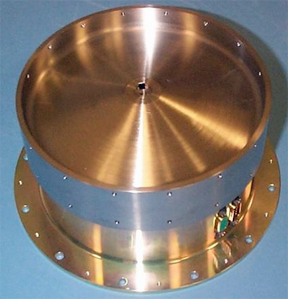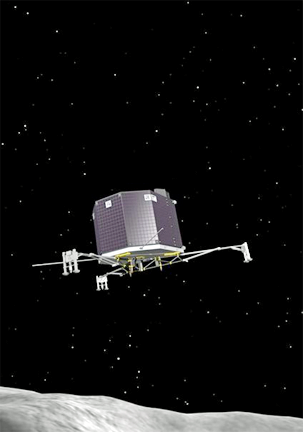
[SatNews] On January 20, 2014, after 957 days of deep-space hibernation, ESA’s comet-chasing mission Rosetta woke up.

In August 2014, the ESA's Rosetta Spacecraft will rendezvous with Comet 67P/Churyumov-Gerasimenko and deploy its Philae lander, as seen in this artist's impression.
Illustration: ESA–C. Carreau/ATG medialab
In August of this year, after traveling for nearly ten years, the Rosetta spacecraft is due to reach its target—the comet 67P/Churyumov–Gerasimenko. Once there, the spacecraft will map the comet’s surface, and then in November Rosetta will dispatch a lander in order to closely inspect the comet’s nucleus and to sample its physical and chemical composition. This is when the excitement really begins for us at Surrey as the lander, Philae, carries a Surrey momentum wheel, delivered for the mission way back in 2001.

The SSTL Momentum Wheel.
Photo courtesy of SSTL.
The momentum wheel on board Philae is there to provide gyroscopic stabilization for the lander as it makes its descent to the comet’s surface. A momentum wheel is a wheel connected to a motor which is spun up to a high rotational speed – this provides what is referred to as an angular momentum bias to the lander.
The bias helps stabilize the lander in the same way that the spinning motion of a gyroscope helps it to stay upright. The Surrey wheel design was a great choice for this mission because of its special bearing which is particularly good for long periods of storage in vacuum. The bearing makes use of a solid lubricant which cannot evaporate into space, unlike the oils used by most wheels in space and on the ground. The wheel is also extremely power efficient, only consuming about 6 watts, which is really important on such a power-limited spacecraft.

Artistic impression of the Philea lander.
Image credit ESA.
After the lander has rendezvoused with 67P/Churyumov–Gerasimenko, the Rosetta spacecraft will follow the comet, and Philae will beam back data. The comet will be at its closest approach to the sun in August 2015, and as it warms up, Philae will be collecting data about the ever-changing conditions at the comet's surface. The waking up of the Rosetta spacecraft is just the start of another countdown for SSTL—checking off the days until November when Philae is released to begin its journey toward the surface of the comet.
SST-US infosite: http://www.sst-us.com/

